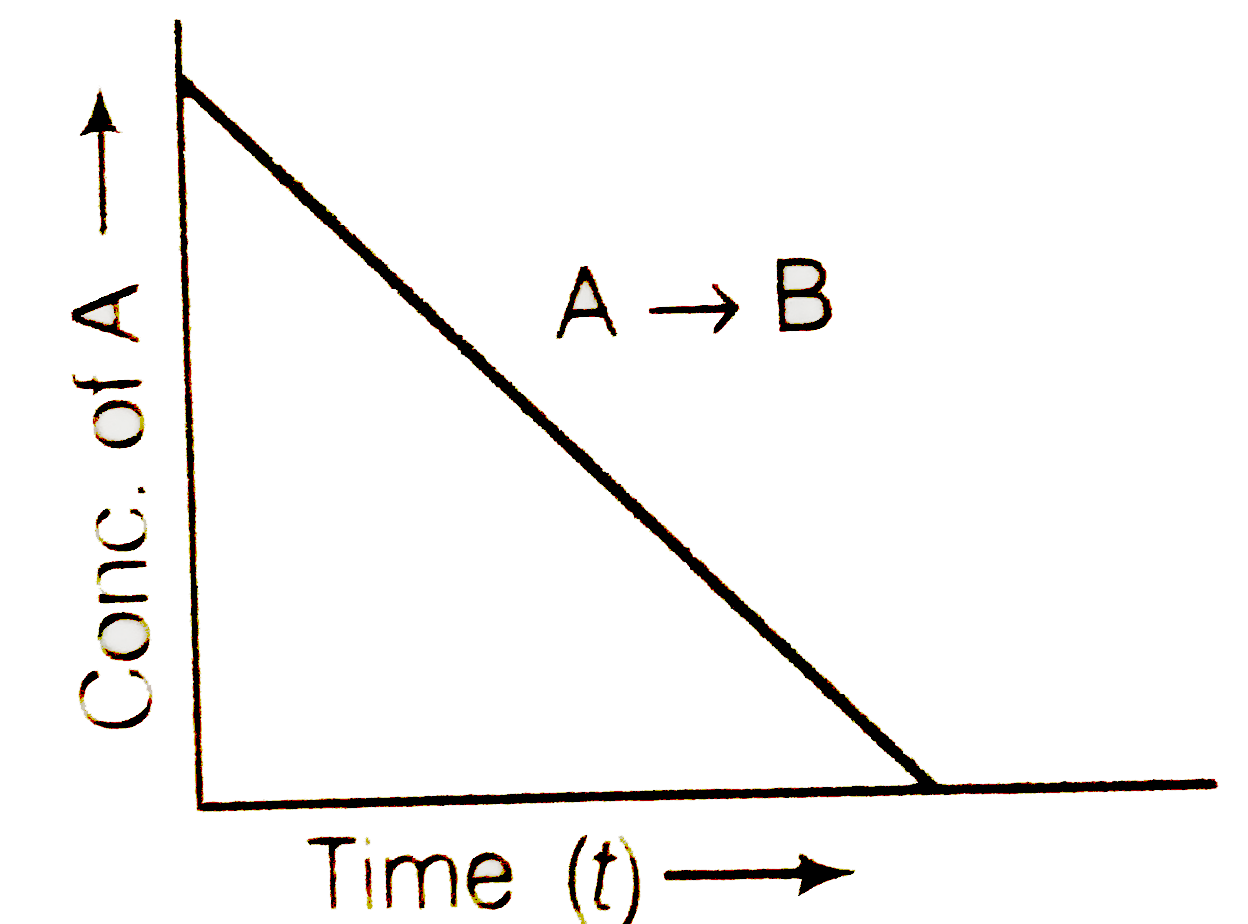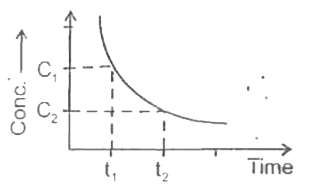For a zero order reaction, the plot of concentration, vs time is linear with
slope and zero intercept
slope and zero intercept
slope and non-zero intercept
slope and non-zero intercept
The correct Answer is:D
To solve the question regarding the plot of concentration vs. time for a zero-order reaction, we can follow these steps:
Step 1: Understand the Zero-Order Reaction
A zero-order reaction is characterized by a constant rate of reaction that does not depend on the concentration of the reactant. This means that the rate of reaction remains constant as the reaction proceeds.
Step 2: Write the Rate Law
For a zero-order reaction, the rate law can be expressed as:
Rate=k
where k is the rate constant.
Step 3: Relate Concentration and Time
For a zero-order reaction, the change in concentration over time can be expressed as:
(A)=(A0)−kt
where:
- (A) is the concentration at time t,
- (A0) is the initial concentration,
- k is the rate constant,
- t is time.
Step 4: Rearrange the Equation
Rearranging the equation gives:
(A)=(A0)−kt
This equation is in the form of y=mx+b, where:
- y is (A),
- m (the slope) is −k,
- x is t,
- b (the y-intercept) is (A0).
Step 5: Identify the Characteristics of the Plot
From the rearranged equation, we can conclude:
- The plot of concentration (A) vs. time t is a straight line.
- The slope of the line is negative (−k), indicating that as time increases, the concentration decreases.
- The y-intercept is (A0), which is a non-zero value.
Conclusion
Thus, for a zero-order reaction, the plot of concentration vs. time is linear with a negative slope and a non-zero intercept.
---
A zero-order reaction is characterized by a constant rate of reaction that does not depend on the concentration of the reactant. This means that the rate of reaction remains constant as the reaction proceeds.
For a zero-order reaction, the rate law can be expressed as:
Rate=k
where k is the rate constant.
For a zero-order reaction, the change in concentration over time can be expressed as:
(A)=(A0)−kt
where:
- (A) is the concentration at time t,
- (A0) is the initial concentration,
- k is the rate constant,
- t is time.
Rearranging the equation gives:
(A)=(A0)−kt
This equation is in the form of y=mx+b, where:
- y is (A),
- m (the slope) is −k,
- x is t,
- b (the y-intercept) is (A0).
From the rearranged equation, we can conclude:
- The plot of concentration (A) vs. time t is a straight line.
- The slope of the line is negative (−k), indicating that as time increases, the concentration decreases.
- The y-intercept is (A0), which is a non-zero value.
Thus, for a zero-order reaction, the plot of concentration vs. time is linear with a negative slope and a non-zero intercept.
Similar Questions
For a general reaction A→B, plot of concentration of A vs time is given in figure. Answer the following questions on the basis of this graph.
(i) what is the order of the reaction?
(ii) What is the slope of the curve ?
(iii) What are the units of rate constant?
 View Solution
View SolutionFor a first order reaction , nA→B whose concentration vs time curve is as shown in the figure. If half -life for this reaction is 24 minutes. Find out the value of n .
 View Solution
View Solution
Knowledge Check
- Question 1 - Select One
Assertion : The decomposition of gaseous ammonia on a hot platinum surface is a zero order reaction at high pressure.
For a zero order reaction the rate of reaction is independent of initial concentration.AIf both assertion and reason are true and reason is the correct explanation of assertion.BIf both assertion and reason are true but reason is not the correct explanation of assertion.CIf assertion is true but reason is false.DIf both assertion and reason are false.
For a zero order reaction '[R]0 is the initial concentration
View SolutionFor a zero order reaction, the half-life periof is independent of the initial concentration.
View SolutionThe graph plotted between concentration versus time
 View Solution
View SolutionFor a zero order reaction, The rate becomes double when the concentration of reactant is doubled.
T or FView SolutionWrite units of rate constant for zero order and for the second order reactions if the concentration is expressed in mol L−1 and time in second.
View Solution
For a certain chemical reaction variation in concentration [A] vs. time (s) plot is given below :
(i) Predict the order of the given reaction ?
(ii) What does the slope of the time and intercept indicate ?
(iii) What is the unit of rate constant k?View SolutionFor the reaction R⇔P Variation of concentration is plotted against time

Which of the following regions show (s) equilibrium ?View Solution

